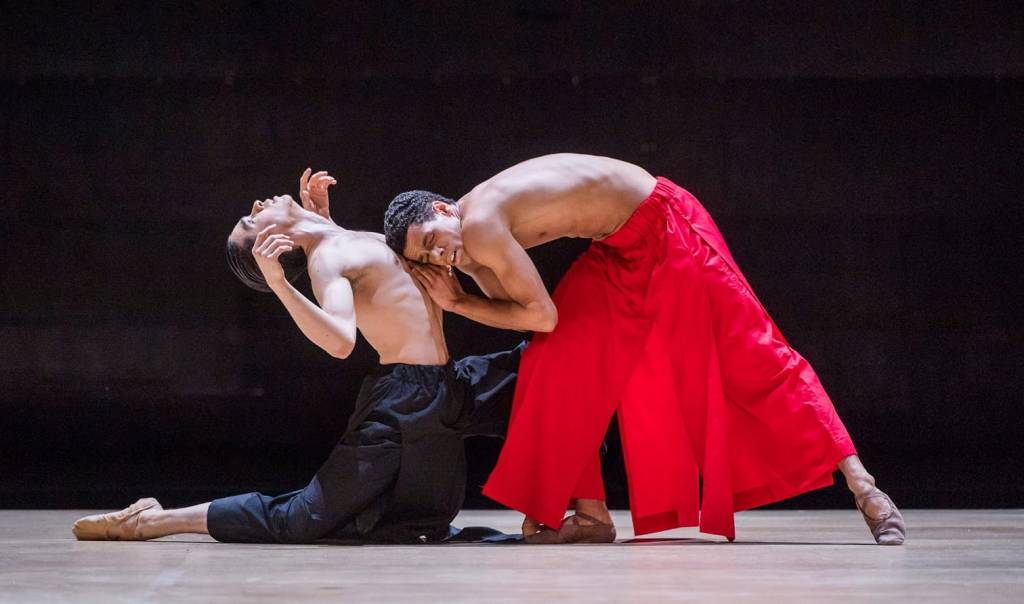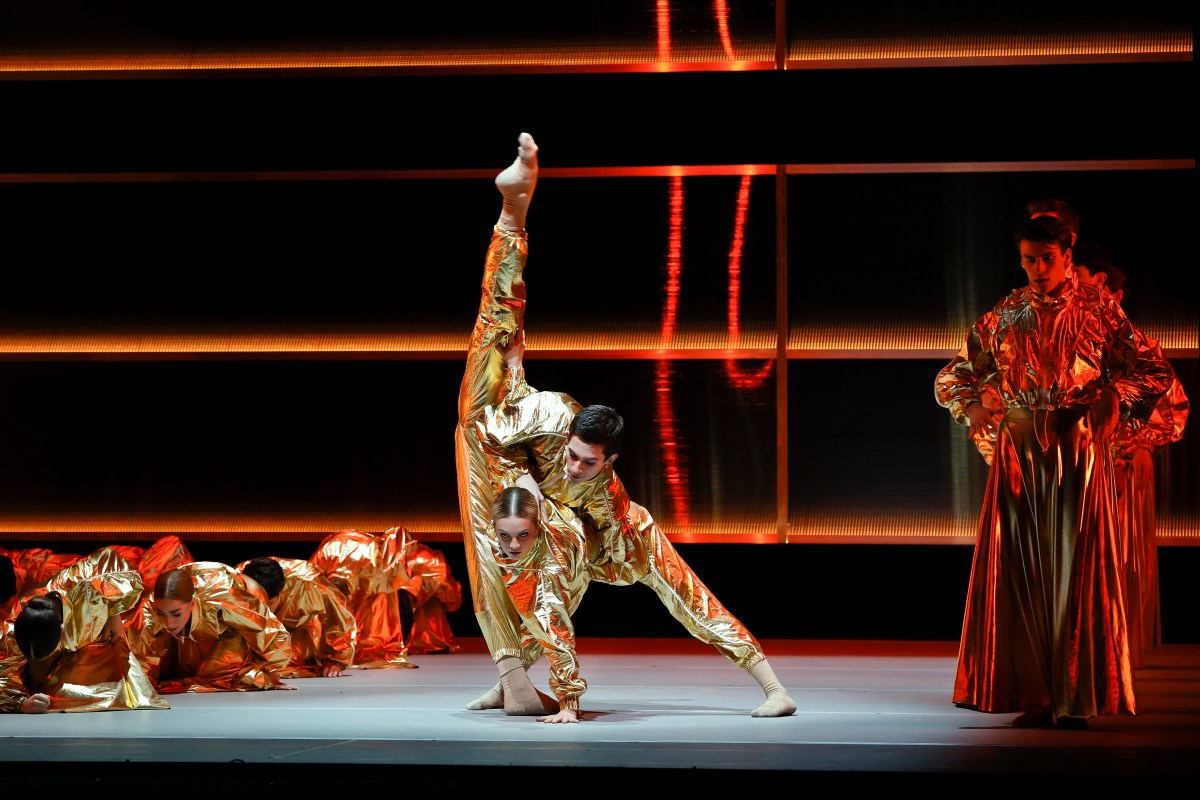Before introducing a triple bill created by still-living choreographers, Artistic Director David Hallberg emphasises the relevance of dance today in his pre-curtain address.
Instruments of Dance features work from Wayne McGregor (The Royal Ballet), Alice Topp (The Australian Ballet) and Justin Peck (New York City Ballet). It is a wildly exciting work, embodying Hallberg’s vision for a new era for The Australian Ballet.
Taking influence from Finnish composer Esa-Pekka Salonen’s Nyx, about the elusive daughter of Chaos, McGregor’s Obsidian Tear is a rich and disquieting look at our most extreme emotions. In a barren landscape, dancers navigate pain and conflict, pulling at the skin of others and pressing themselves into new forms.
When paired with Salonen’s Nix and the frenetic violin solo Lachen Verlernt, exquisitely played by Sulki Yu, the result is a jarring mix of ancient customs and a dystopian future. Principal artist Adam Bull brings remarkable power, leading the all-male cast through rituals of violence and punishment.

In program notes, McGregor describes trying to mine a territory that is ‘sometimes violent and aggressive and adversarial, and sometimes tender and humane and quietly beautiful’. Yet, the urgent embraces and long-held gazes feel destructive at their core, offering little respite.
Topp’s work finds its name and structure in the word ‘Annealing’, a biochemical term describing a process of transforming hard metal into to a malleable substance, beautifully realised in its worldwide premiere.
Its ethereal opening pas de deux presents a simulation of emotion without a human core. An intimate conflict between corps members Adam Elmes and Samara Merrick expands into the staccato movements of the ensemble, evoking fear of a future that is shielded from pain but lacks humanity. Dimity Azoury and Callum Linnane close the work with painful closeness, vulnerable and open to a new way of living.
Wardrobe transitions through the three sections of Annealing, from flowing metallics to utilitarian gold workwear to soft hues and shapes, redefine traditional ideas of strength and emphasise the quiet power of vulnerability.
Read: Book review: Here Be Leviathans, Chris Flynn
In sharp opposition, Peck’s Everywhere We Go bursts with energy and feels imbued with the legacies of New York City Ballet greats. We see George Balanchine in the flick of a wrist as dancers saunter across stage, and Jerome Robbins in the West Side Story-style swagger of the men.
Dancers seem to thrive on the unusual time signatures in Sufjan Stevens’ score – a testament to Peck and Stevens’ familiarity developed from Year of the Rabbit to Principia, and the dancers’ willingness to absorb unfamiliar styles.
Though remarkable in its ability to play with the classical form through movement and sound, the joviality of Everywhere We Go feels out of place in a room shared with McGregor’s brutality and Topp’s intimacy.
Despite the incongruity, Instruments of Dance is a feat in expanding what ballet can be and pushing audiences to their emotional edge.
Instruments of Dance
The Australian Ballet
State Theatre, Arts Centre Melbourne
Choreography: Wayne McGregor, Alice Topp, Justin Peck
Composers: Esa-Pekka Salonen, Bryony Marks, Sufjan Stevens
Costume design: Kat Chan, Janie Taylor, Katie Shillingford (Fashion Director)
Set design: Jon Buswell, Karl Jensen
Lighting design: Lucy Carter, Jon Buswell, Brandon Stirling Baker
Instruments of Dance will be performed at the Arts Centre, Melbourne until 1 October 2022, before touring to Sydney from 10–26 November.





